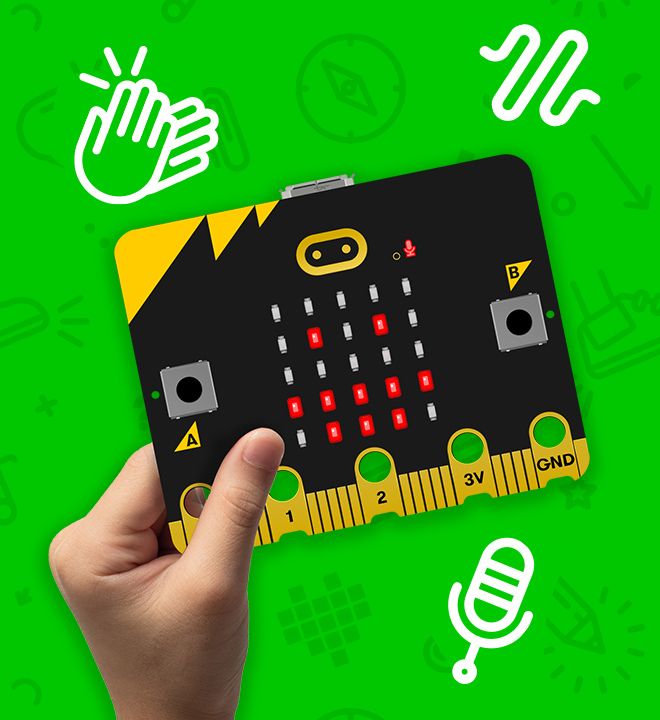Meet the new BBC micro:bit 2.0
Now with speaker and microphone!
Same great features, easier ways to use sound and touch to get creative in the classroom

Now with speaker and microphone!
Same great features, easier ways to use sound and touch to get creative in the classroom

We’re really excited to announce the launch of the latest BBC micro:bit.

Sense and react to sound with the built-in microphone

Play sound with the built-in speaker

Capacitive touch sensor
(a bit like your phone!)

Power saving mode

More computing power
You have all obviously been listening to the community… the addition of the speaker and mic is a gamechanger!
Joachim Choen, New South Wales, Australia
With five million micro:bits already used for teaching digital skills and computational thinking, the updated micro:bit - available from November 2020 at the same price point - is set to add even more opportunities for learning, exploration and creativity in classrooms.

You can turn the outdoors into your classroom with the micro:bit
This is extremely exciting news, I can't wait to get this into our classrooms!
Shaina Glass, Aldine Independent School District, Texas, USA
With the built-in speaker, microphone and touch sensor on the new micro:bit, there are even more exciting things you can add to your projects.
Clap your hands to make the heart beat using the sound sensor
Fly your bumblebee to see how motion affects the frequency, tempo and volume of its sound
Keep singing to make all the LEDs light up
Talk to your micro:bit and listen to it mimic the rhythm of your speech
My pupils and I have been exploring sound with micro:bit in projects for several years. Now these investigations can be taken to a whole new level.
Justin Bioletti, Torriano Junior School, London

The new BBC micro:bit has a built-in microphone and speaker to allow sound-sensing and sound-making without the need to attach another device.
Great to see the new micro:bit with more fun with sound. That is a real trigger for kids for sure! This looks really promising and it keeps the simplicity and is true to the original concept. I like that!
Jon Haavie, Teknisk Museum, Norway
Our online editors are designed to be really easy to use to program the micro:bit and this will continue for the new features of sound sensing, sound-making and touch.

The latest micro:bit will fit right in to your existing lessons and materials; all the existing MakeCode blocks and MicroPython code will work in the same way as they do on the original micro:bit. The previous micro:bit will also continue to work just as it did before. More features, including easy ways to take AI and ML into the classroom, will be released throughout 2021. Watch this space.
We've summarised the detail on the hardware and software on our tech website.
Getting hands-on and experimenting with the micro:bit is critical to helping children better understand important technologies early in their development.
Gareth Stockdale, CEO Micro:bit Educational Foundation
